Struggling to come up with social media content? Looking for a process to fuel your content creation?
In this article, you'll discover a repeatable system you can use to develop a pipeline of content ideas that never ends and a four-part system to create headlines that will guide content creation for multiple social media platforms.
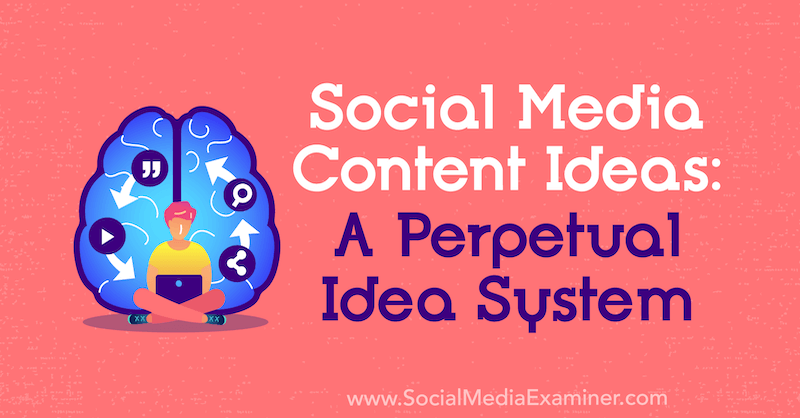
To discover a proven system for social media content ideas, read the article below for an easy-to-follow walkthrough or watch this video:
#1: Define Your Ideal Customer
The first step is to create a persona by drilling down on your ideal customer avatar. To do this exercise, add four columns to a sheet of paper or spreadsheet: General, Specific, Pain Points, and Needs.
In the first column, list the general demographics of this person, such as “female, 35-50 years old, who's interested in health and wellness.”
The next column should describe who this person is specifically. Give them an actual name, such as “Sandra, 40 years old, lives in Burbank, California, has two kids named Ricky and Steven.” Then describe what this person's life is like and give a little bit of their history. The idea is that you could close your eyes and picture this person sitting across the table from you.
The next column is where you list all of the pain points of the avatar but not just as they relate to your product or service. What causes small or big moments of pain in this person's life? Maybe they don't sleep well and are very busy.
In the last column, describe their wants and needs based on those pain points. For instance, if they don't sleep well, they need rest. If they have a busy schedule, they need more time.
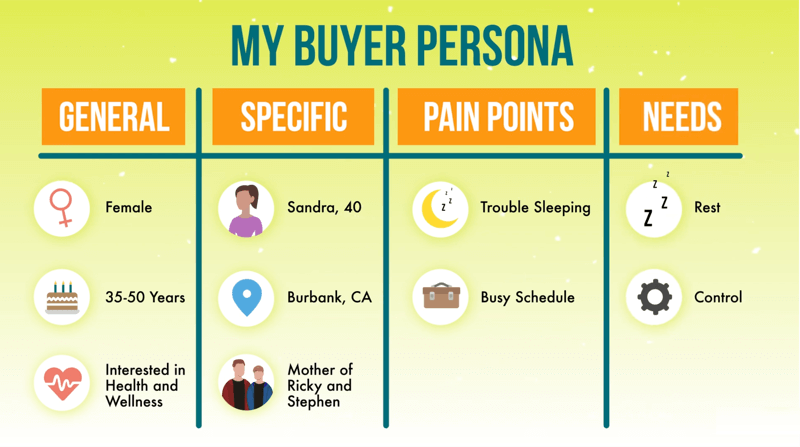
#2: Plot a Lifestyle Map
The next step is what I call the lifestyle map. This is where you draw a circle with five or six spokes (like bicycle spokes) coming out of it. On each spoke, list a core lifestyle trait of the avatar.
Don't make this too specific to your avatar. With the “Sandra” persona, you wouldn't want to list Burbank, California specifically on your lifestyle map. Not everybody in your avatar base is going to live in Burbank, California, so they may not care about the five best gyms there.
You're looking for core lifestyle traits that are broad enough to appeal to the entire customer base.
![]()
Get World-Class Marketing Training — All Year Long!
Are you facing doubt, uncertainty, or overwhelm? The Social Media Marketing Society can help.
Each month, you’ll receive training from trusted marketing experts, covering everything from AI to organic social marketing. When you join, you’ll also get immediate access to:
- A library of 100+ marketing trainings
- A community of like-minded marketers
- Monthly online community meetups
- Relevant news and trends updates
#3: Identify Core Lifestyle Trait Searches
Now you're ready to do some keyword research using a tool like Google Keyword Planner. Think about what your avatar is searching for related to these core lifestyle traits.
You can access Keyword Planner through the Tools & Settings menu in your Google Ads dashboard or by going to ads.google.com/aw/keywordplanner.
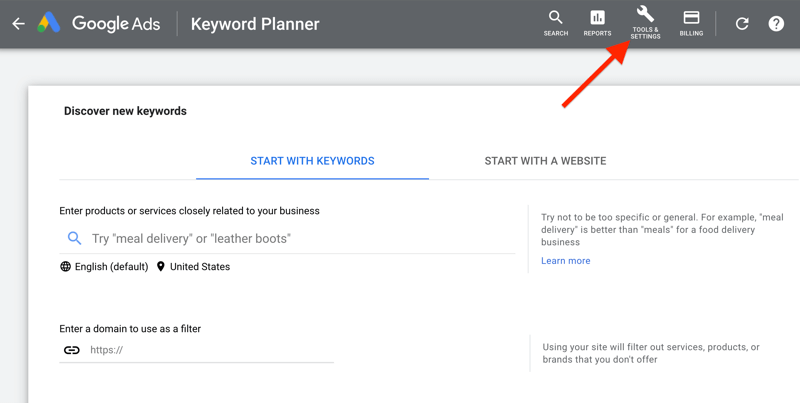
If one of your core lifestyle traits is losing 20 pounds, your avatar's search might be something like “how to lose 20 pounds quickly,” “how to lose 20 pounds without a diet,” or “how to lose 20 pounds with strength training.” Start with 10 search phrases per core lifestyle trait and then go from there.
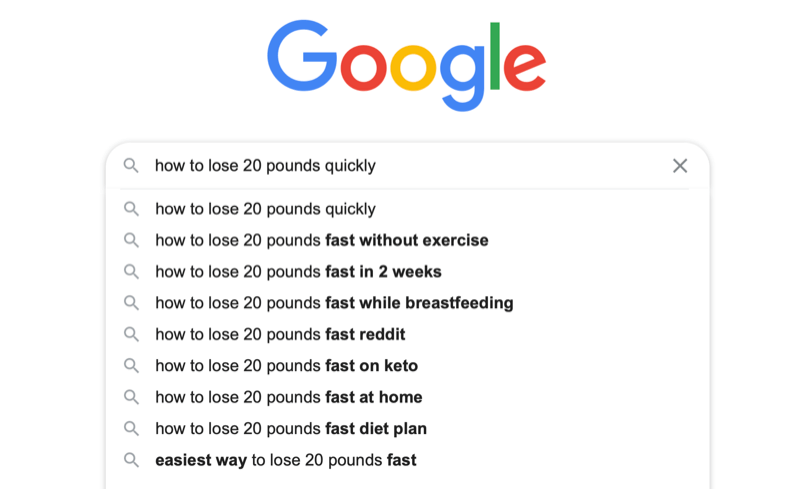
#4: Create Headlines From Your Audience's Searches
After you've compiled a list of various search terms, the last step is to turn those searches into headlines that will guide your content creation. For instance, the search “How to lose weight with strength training” could turn into “10 scientifically proven ways to lose weight with strength training.”

Discover Proven Marketing Strategies and Tips
Want to go even deeper with your marketing? Check out the Social Media Marketing Podcast! Publishing weekly since 2012, the Social Media Marketing Podcast helps you navigate the constantly changing marketing jungle, with expert interviews from marketing pros.
But don’t let the name fool you. This show is about a lot more than just social media marketing. With over 600 episodes and millions of downloads each year, this show has been a trusted source for marketers for well over a decade.
Come up with one headline for each search term. If you have six spokes on your lifestyle map, this will give you 60 potential story ideas (assuming you have 10 search terms from each core lifestyle trait).
How do you ensure a quality headline? That's where the SEED system comes in. It's a filter to put all of your headline ideas through to ensure they're not only solid but also make a great story.
The SEED system is a four-part acronym: specificity, empathy, emotion, and deliver. Every headline you create needs to tick every one of these boxes.
Specificity: Is the headline specific? The headline “Best ways to lose weight with strength training” doesn't specifically tell people what's on the other side of their click. Words like “best” aren't descriptive of anything. When you use vague headlines like this, people aren't sure if the content will be relevant to them, so they're less likely to click.
To make the strength training headline more specific, you could add a number—”5 scientifically proven ways to lose weight with strength training.” Lists work well on a psychological level. And saying that these tactics are science-backed adds authority and makes a click even more attractive.
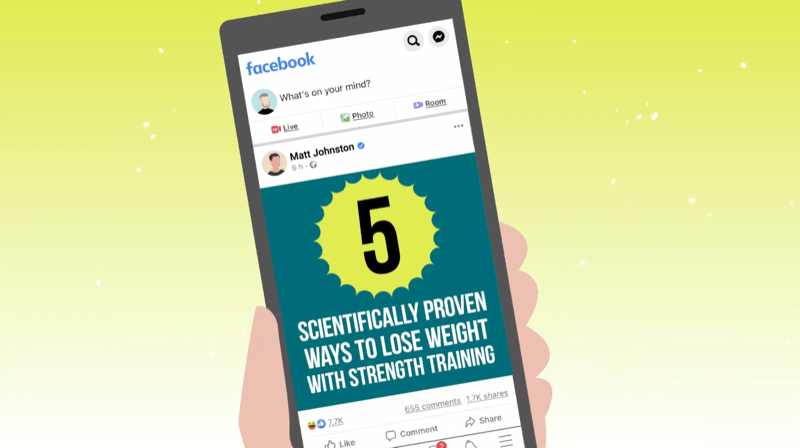
Empathy: The more you can appeal to your audience's emotional life and pain points in your headlines, the better. You've done a lot of this work already by going through the persona exercise, identifying their pain points, and doing the lifestyle map. If you've done everything right, every search term and idea should be aligned empathetically.
Emotion: If your headline doesn't make people feel something as soon as they read it, it's probably not going to work. Empathy and emotion are why people will feel compelled to click. They need to believe that that content could potentially have a transformative impact on their life.
Deliver: You must deliver on the promise of your headline. If you have a great headline but don't back it up with a valuable piece of content, you haven't delivered to your audience.
At the end of this process, you'll have 60 headlines you can turn into stories across all types of platforms. These angles can be used for everything from social video and Instagram stories to a simple image.
Bonus: Create Content Specific to Your Brand and Business
If you want to create content that aligns with your brand and the exact problem your product solves, try creating a problem/solution grid. Grab a sheet of paper or open up a new doc and start with three columns: Problem, Solution, and Headline.
In the first column, list all of the problems your avatar faces. In the middle column, write down the solution to those problems you can provide. And finally, list relevant headline ideas.
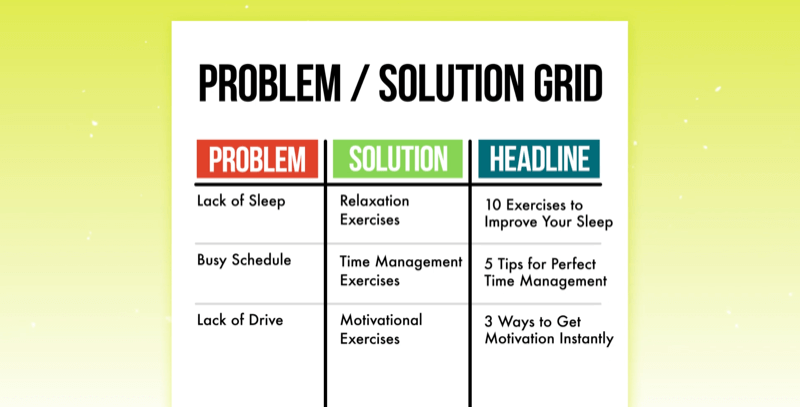
Try to come up with at least three headlines for each row of the problem/solution grid. This will give you additional content ideas that are branded to what your business is trying to sell.
Conclusion
If you're struggling to come up with story ideas for your social media channels, this four-part system will help you develop an endless supply of topics that will interest your audience. Start with your buyer persona and then use it to create a lifestyle map with core lifestyle traits. Next, think about what your avatar is searching for related to these core lifestyle traits. And finally, turn these searches into headlines that will guide your content creation.
What do you think? Will you try this system to fuel your content creation? Share your thoughts in the comments.
More articles on social media marketing:
- Discover five ways to repurpose audio and video content for social media.
- Learn how to create engaging video content that spurs an emotional connection.
- Find tips for using organic content on Facebook, LinkedIn, and Twitter.
Attention Agency Owners, Brand Marketers, and Consultants

Introducing the Marketing Agency Show–our newest podcast designed to explore the struggles of agency marketers.
Join show host and agency owner, Brooke Sellas, as she interviews agency marketers and digs deep into their biggest challenges. Explore topics like navigating rough economic times, leveraging AI, service diversification, client acquisition, and much more.
Just pull up your favorite podcast app, search for Marketing Agency Show and start listening. Or click the button below for more information.

